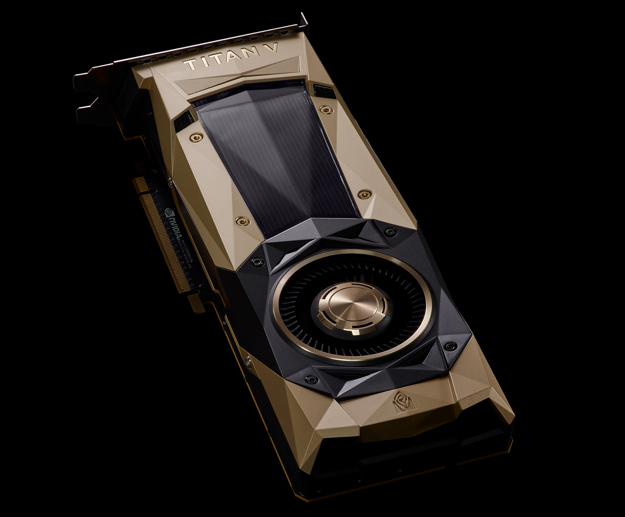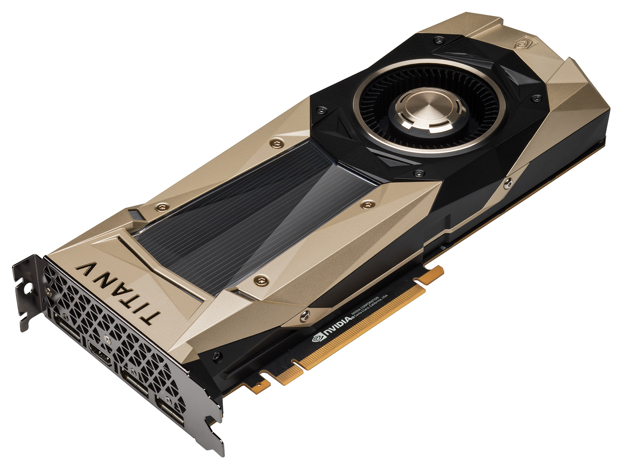NVIDIA Announces Monstrous TITAN V With Volta GV100 GPU, 12GB HBM2, 110 TFLOPs Compute
Now, NVIDIA is ready to unleash a completely new GPU aimed at researchers and scientists, the TITAN V. The card was fittingly announced at the Conference and Workshop on Neural Information Processing Systems (NIPS) in Long Beach, California. The new TITAN V is based on the NVIDIA Volta architecture, and with that shift comes a gigantic leap in compute performance with certain workloads. According to the company, the TITAN V’s redesigned Tensor Cores, which feature independent parallel integer and floating-point data paths, help to fuel a whopping 9x uplift in Tensor Performance compared to the TITAN Xp, coming in at a dizzying 110 TFLOPs for Deep Learning workloads. Single-Precision performance will likely come in at a much more tame 14 TFLOPs, give or take depending on the GPU frequency.
All of that power is packed into the 21.1 billion-transistor GV100 GPU that is manufactured using a TSMC 12nm FFN high-performance process, customized for NVIDIA. The TITAN V is loaded up with 5120 CUDA cores, 640 Tensor Cores, and has base/boost clocks of 1200MHz and 1455MHz respectively. The HBM2 memory is running at 1.7Gbps with a 3072-bit interface (for effective bandwidth of 653GB/sec). While the GV100 GPU that powers NVIDIA's Tesla V100 accelerator is paired with 16GB of HBM2, the TITAN V comes with 12GB of HBM2. Other details that NVIDIA is willing to share at this point include the fact that TITAN V has a new combined L1 data cache and a shared memory unit to improve overall performance. Power efficiency has reportedly been drastically improved with Volta as well; NVIDIA is claiming big performance gains, within the same power envelope as Pascal.
“Our vision for Volta was to push the outer limits of high performance computing and AI. We broke new ground with its new processor architecture, instructions, numerical formats, memory architecture and processor links,” said NVIDIA CEO Jensen Huang. “With TITAN V, we are putting Volta into the hands of researchers and scientists all over the world. I can’t wait to see their breakthrough discoveries.”
As you might expect, the TITAN V will be added to the NVIDIA GPU Cloud, which provides quick access to a fully optimized deep learning software stack to advance artificial intelligence (AI) development.
“As an NVIDIA Inception partner, we trust NVIDIA to deliver innovative solutions to the AI market. Today, their solutions further evolve to better support an important phase of AI development: experimentation,” added Jeremy Antoniuk, COO for Deep Cognition. “With TITAN V and NGC, Deep Cognition’s Deep Learning Studio has built a powerful desktop solution for AI development, iteration and training.”
Given that the TITAN V is designed for use in research environments, don't expect to see an "enthusiast class" price on the card. Instead, the TITAN V is priced at $2,999 and is available right now from the NVIDIA store.




